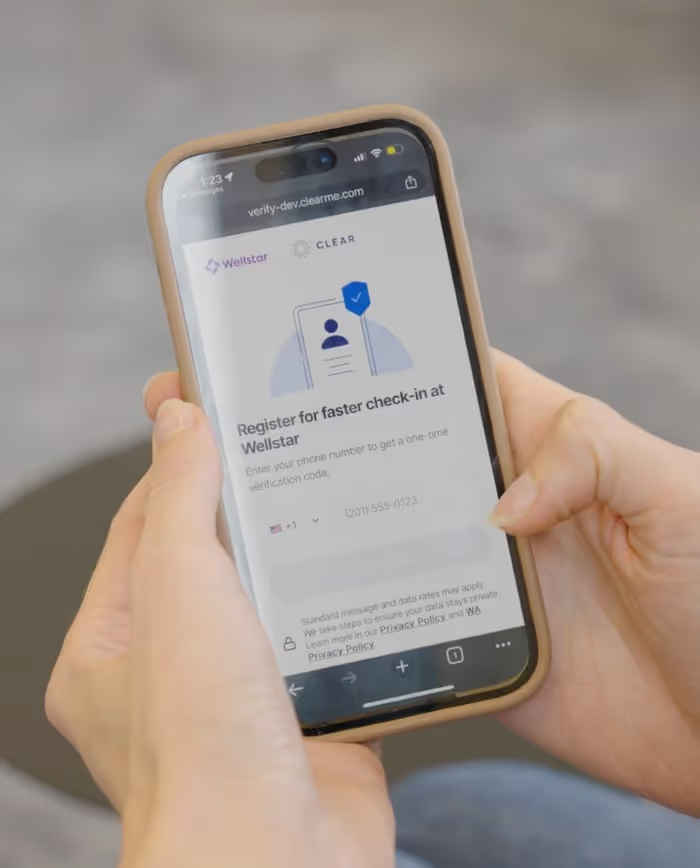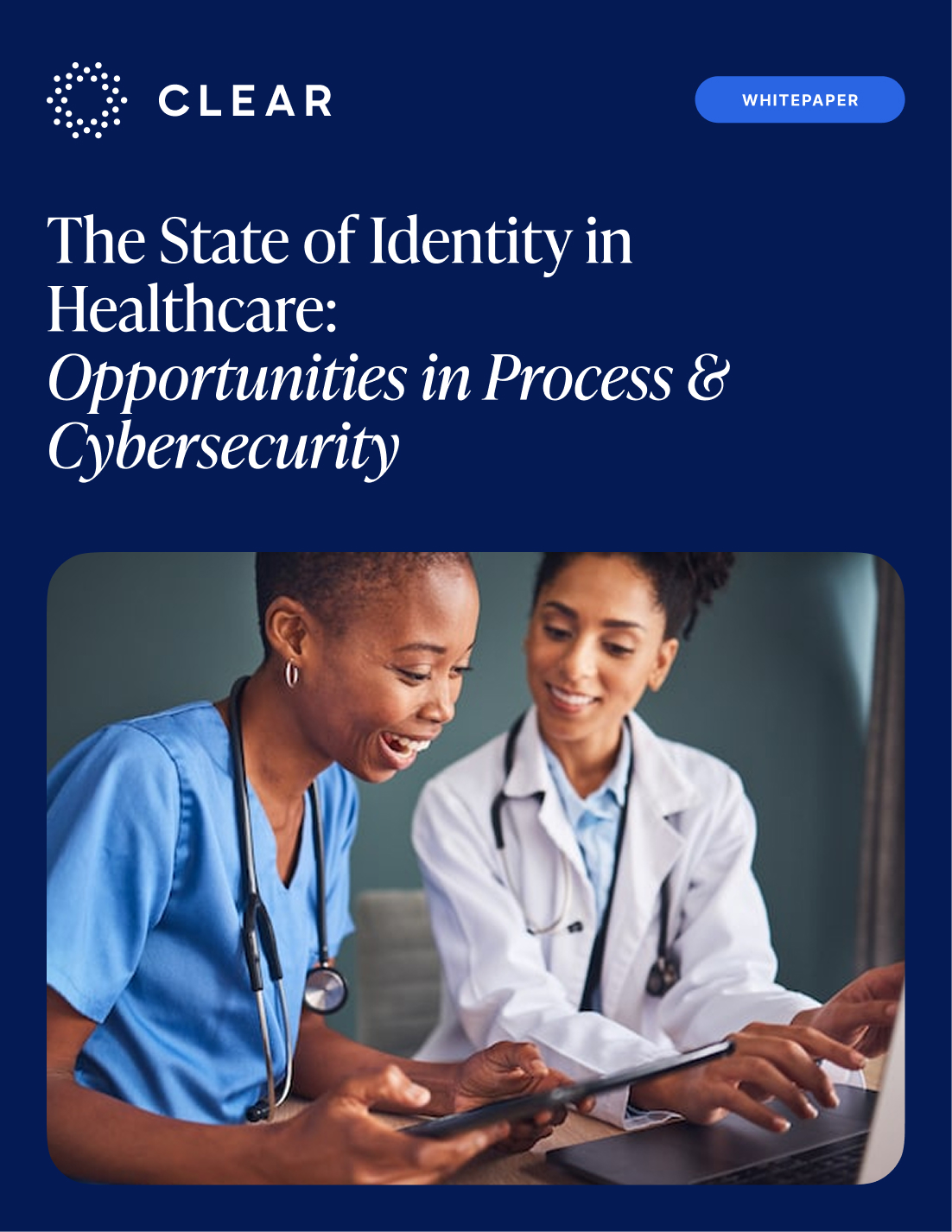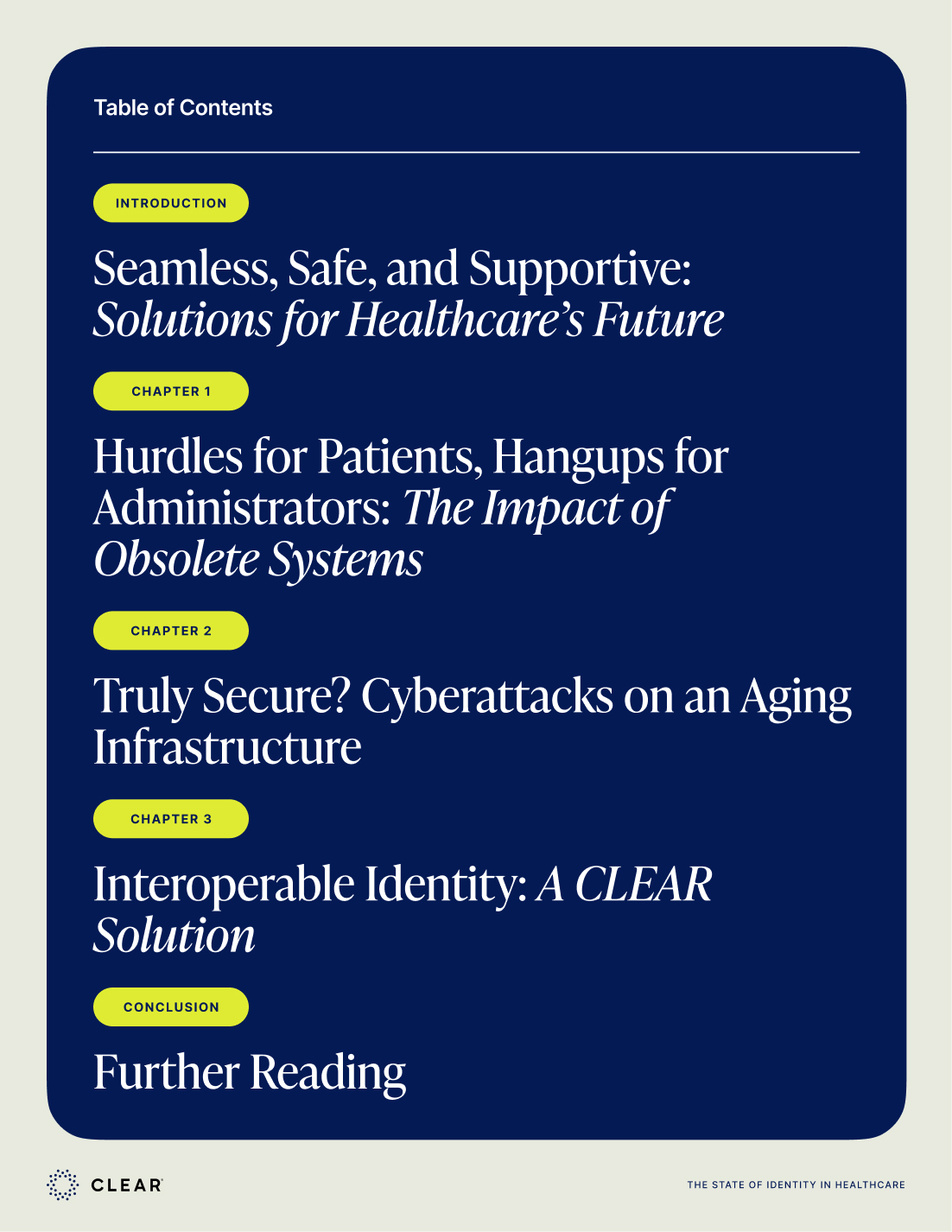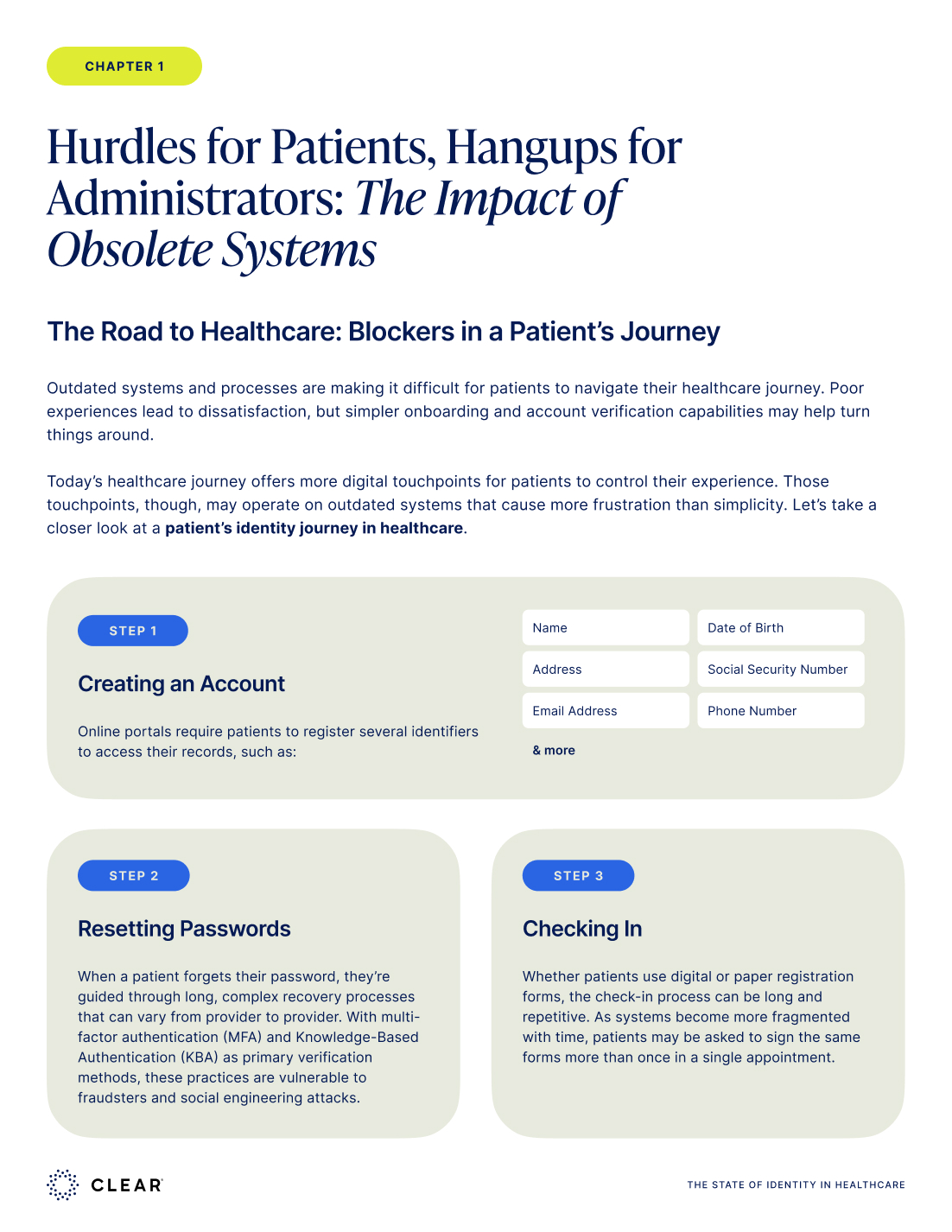


The Case for Modern Fraud Analytics
Modern fraud attacks are happening with unprecedented speed and sophistication, yet most organizations still rely on fraud analytics systems designed for a simpler threat landscape. Traditional fraud detection systems generate overwhelming false positives, blocking legitimate customers, while letting sophisticated attacks slip through undetected.
The problem isn't that traditional fraud analytics don't work—it’s that they were built for a world where fraud was less complex. While businesses focus on fine-tuning existing rules, the real vulnerability lies in reactive systems that can't adapt to today’s AI-powered fraud tactics. To keep up, modern fraud analytics approaches must use identity verification as a foundation, powered by established identity solutions like CLEAR1.
The Rules-Based Legacy of Traditional Fraud Analytics
Traditional fraud detection relies on static rules—spending thresholds, transaction patterns, and location mismatches. These systems process fraud signals in batches, often hours or days after a transaction occurs.
Meanwhile, fraud has evolved:
- Account takeover fraud is up 354% since 2021
- $12.5B+ in losses were reported to the FBI in 2023
- 95% of fraud alerts are false positives, which overwhelm teams with noise
Fraudsters now use machine learning to test detection thresholds, create false identities, and coordinate attacks across multiple institutions. These bad actors can deploy automated tools that probe system responses in real-time, adapting their tactics faster than rule-based systems can respond.
The root problem is that rules-based systems treat everyone the same—ignoring behavioral context, device intelligence, and real-time threat signals. Once attackers understand the rules, they work around them. The result? 98% of Anti-Money Laundering (AML) alerts never result in suspicious transaction reports, amounting to wasted resources that divert attention away from real threats.
How Next-Generation Fraud Analytics Provide Proactive Protection
To close this dangerous gap, savvy organizations are deploying a fraud prevention approach that flips the model: start with identity, then layer real-time analytics on top.
Modern fraud analytics approaches combine:
- Real-time machine learning that adapts automatically to new attack patterns without manual rule updates.
- Behavioral biometrics that detect account takeover attempts instantly by analyzing keystroke patterns, mouse movements, and device interactions.
- Multi-layered identity verification that prevents synthetic fraud by validating identity across multiple data sources and verification methods.
- Network analysis that reveals fraud ring connections that traditional systems miss entirely.
The results speak for themselves: Some institutions have cut false positives by 60% while catching 50% more fraud.
Identity-First Fraud Analytics: The CLEAR1 Advantage
While comprehensive fraud analytics are essential, the foundation of effective fraud prevention starts with knowing exactly who you're dealing with through robust identity verification. With impersonation scams increasing 148% year-over-year, organizations expose themselves to risk without a verified identity as the foundation of their security.
What sets CLEAR1 apart:
- Multiple layers of identity checks from biometrics and source corroboration to protect your business by letting you know exactly who you're working with
- Evaluation of 300+ device security signals to identify compromised devices, helping detect account takeovers, credential stuffing, and synthetic identity attacks
- More than 36 million users who can verify instantly with just a selfie
When customers verify with CLEAR1, businesses gain confidence that reduces fraud risk and provides a better experience overall.
Taking Fraud Analytics Beyond Compliance to Competitive Edge
Fraud prevention shouldn’t just be a defensive play––it’s a strategic advantage.
Companies using identity-first analytics benefit from:
- Streamlined onboarding without compromising security
- Higher trust from customers who feel protected and respected
- Lower costs due to fewer manual reviews and false positives
Security and seamless experiences build trust, which ultimately drives customer loyalty.
Ready to transform your fraud analytics from reactive detection to proactive prevention? Discover how CLEAR1's advanced identity verification can enhance your fraud capabilities while maximizing efficiency.
The Case for Modern Fraud Analytics
Modern fraud attacks are happening with unprecedented speed and sophistication, yet most organizations still rely on fraud analytics systems designed for a simpler threat landscape. Traditional fraud detection systems generate overwhelming false positives, blocking legitimate customers, while letting sophisticated attacks slip through undetected.
The problem isn't that traditional fraud analytics don't work—it’s that they were built for a world where fraud was less complex. While businesses focus on fine-tuning existing rules, the real vulnerability lies in reactive systems that can't adapt to today’s AI-powered fraud tactics. To keep up, modern fraud analytics approaches must use identity verification as a foundation, powered by established identity solutions like CLEAR1.
The Rules-Based Legacy of Traditional Fraud Analytics
Traditional fraud detection relies on static rules—spending thresholds, transaction patterns, and location mismatches. These systems process fraud signals in batches, often hours or days after a transaction occurs.
Meanwhile, fraud has evolved:
- Account takeover fraud is up 354% since 2021
- $12.5B+ in losses were reported to the FBI in 2023
- 95% of fraud alerts are false positives, which overwhelm teams with noise
Fraudsters now use machine learning to test detection thresholds, create false identities, and coordinate attacks across multiple institutions. These bad actors can deploy automated tools that probe system responses in real-time, adapting their tactics faster than rule-based systems can respond.
The root problem is that rules-based systems treat everyone the same—ignoring behavioral context, device intelligence, and real-time threat signals. Once attackers understand the rules, they work around them. The result? 98% of Anti-Money Laundering (AML) alerts never result in suspicious transaction reports, amounting to wasted resources that divert attention away from real threats.
How Next-Generation Fraud Analytics Provide Proactive Protection
To close this dangerous gap, savvy organizations are deploying a fraud prevention approach that flips the model: start with identity, then layer real-time analytics on top.
Modern fraud analytics approaches combine:
- Real-time machine learning that adapts automatically to new attack patterns without manual rule updates.
- Behavioral biometrics that detect account takeover attempts instantly by analyzing keystroke patterns, mouse movements, and device interactions.
- Multi-layered identity verification that prevents synthetic fraud by validating identity across multiple data sources and verification methods.
- Network analysis that reveals fraud ring connections that traditional systems miss entirely.
The results speak for themselves: Some institutions have cut false positives by 60% while catching 50% more fraud.
Identity-First Fraud Analytics: The CLEAR1 Advantage
While comprehensive fraud analytics are essential, the foundation of effective fraud prevention starts with knowing exactly who you're dealing with through robust identity verification. With impersonation scams increasing 148% year-over-year, organizations expose themselves to risk without a verified identity as the foundation of their security.
What sets CLEAR1 apart:
- Multiple layers of identity checks from biometrics and source corroboration to protect your business by letting you know exactly who you're working with
- Evaluation of 300+ device security signals to identify compromised devices, helping detect account takeovers, credential stuffing, and synthetic identity attacks
- More than 36 million users who can verify instantly with just a selfie
When customers verify with CLEAR1, businesses gain confidence that reduces fraud risk and provides a better experience overall.
Taking Fraud Analytics Beyond Compliance to Competitive Edge
Fraud prevention shouldn’t just be a defensive play––it’s a strategic advantage.
Companies using identity-first analytics benefit from:
- Streamlined onboarding without compromising security
- Higher trust from customers who feel protected and respected
- Lower costs due to fewer manual reviews and false positives
Security and seamless experiences build trust, which ultimately drives customer loyalty.
Ready to transform your fraud analytics from reactive detection to proactive prevention? Discover how CLEAR1's advanced identity verification can enhance your fraud capabilities while maximizing efficiency.























